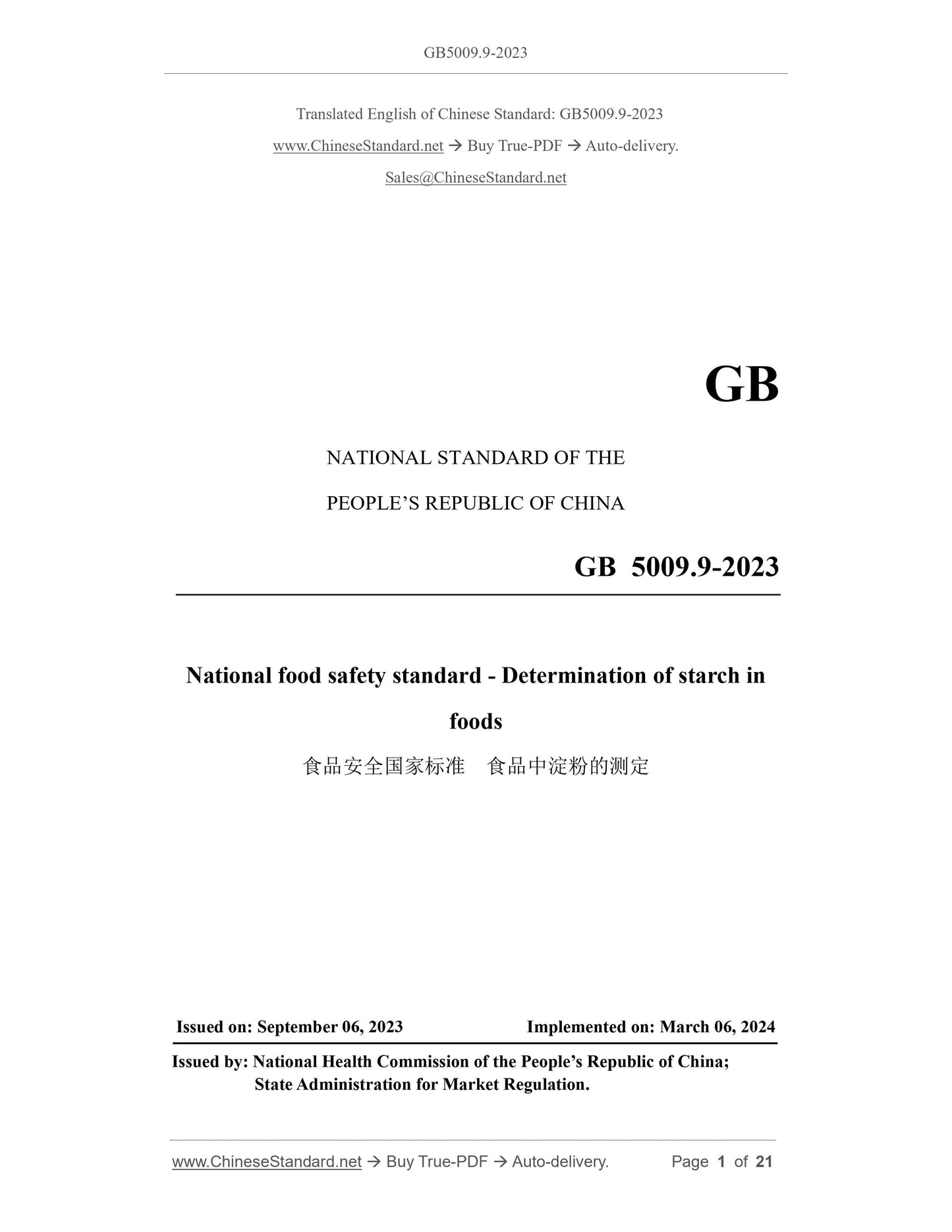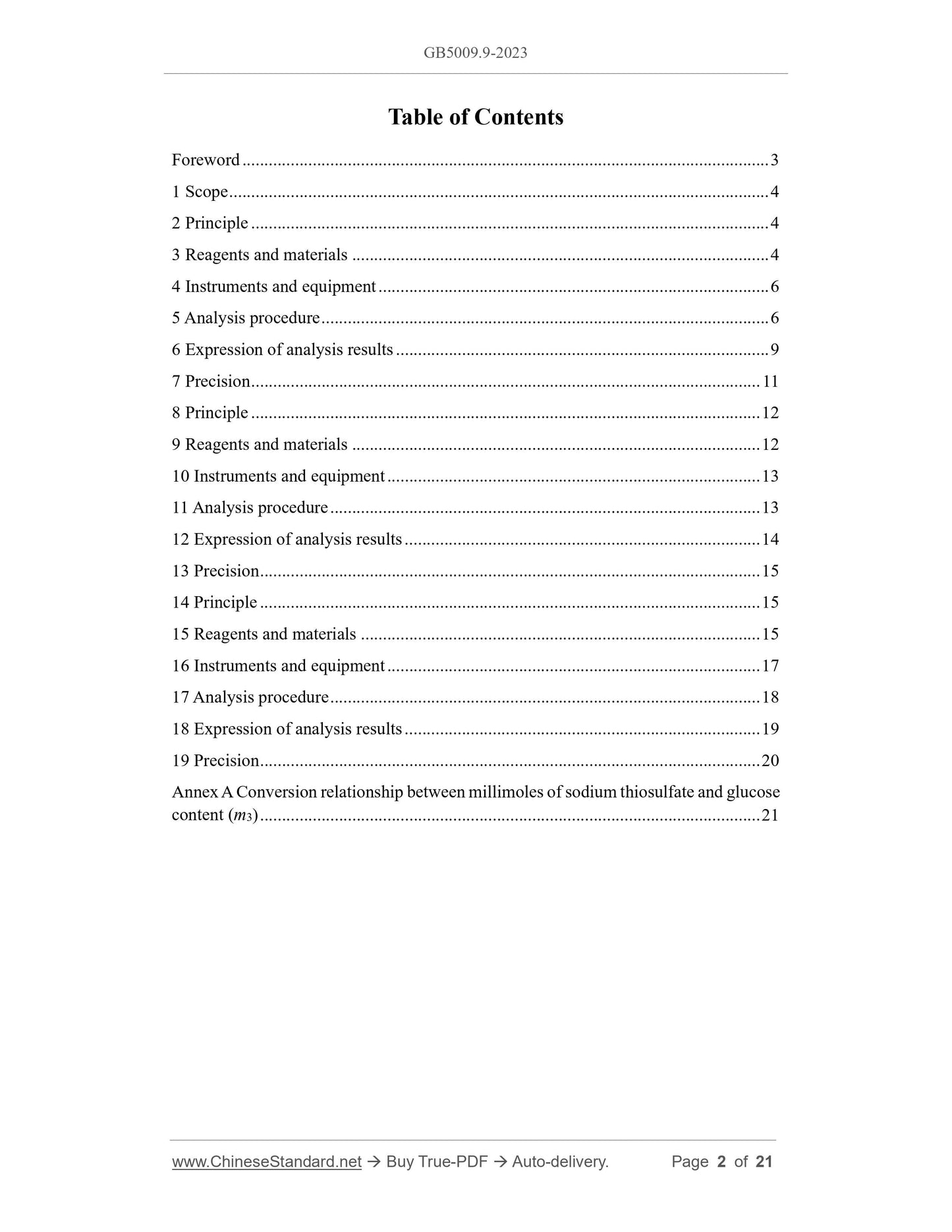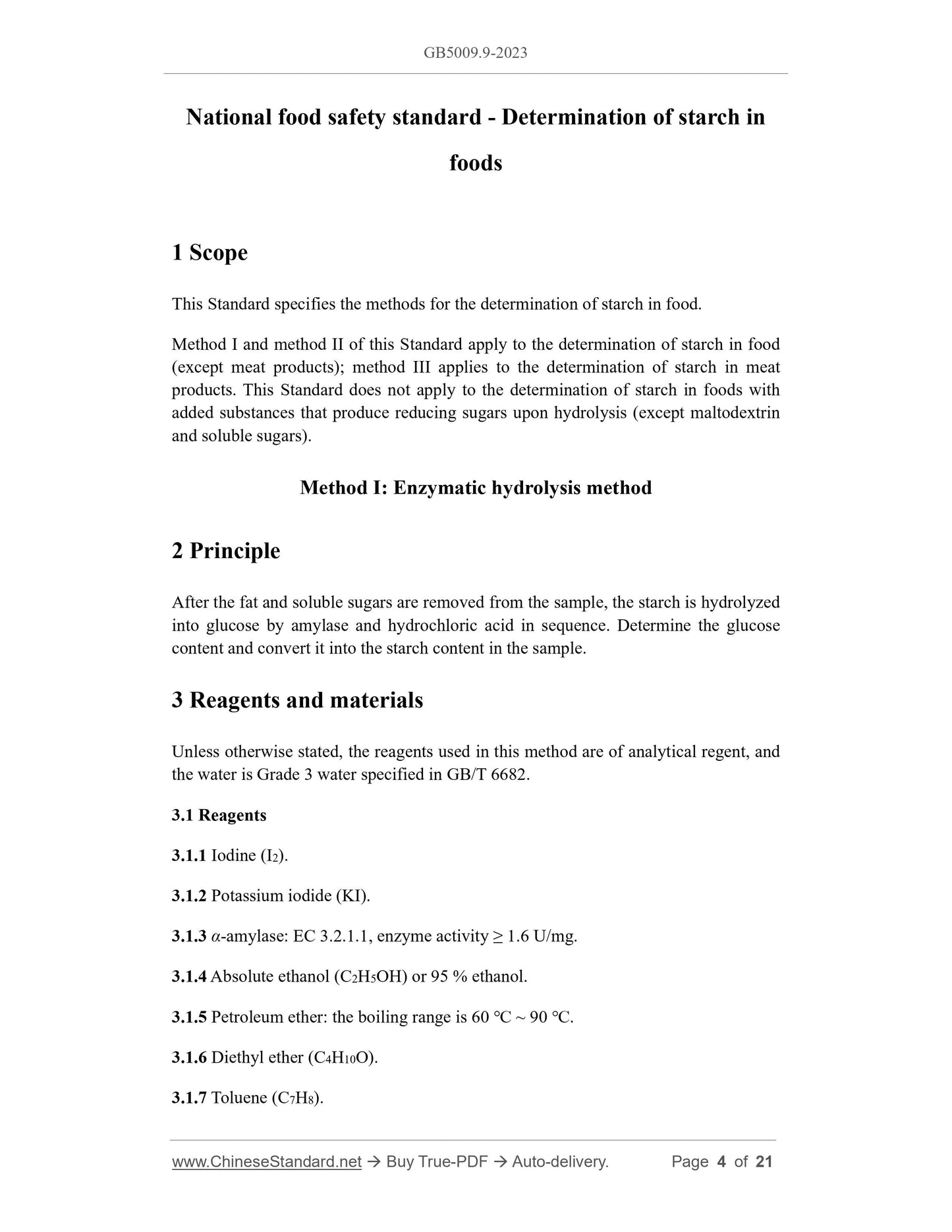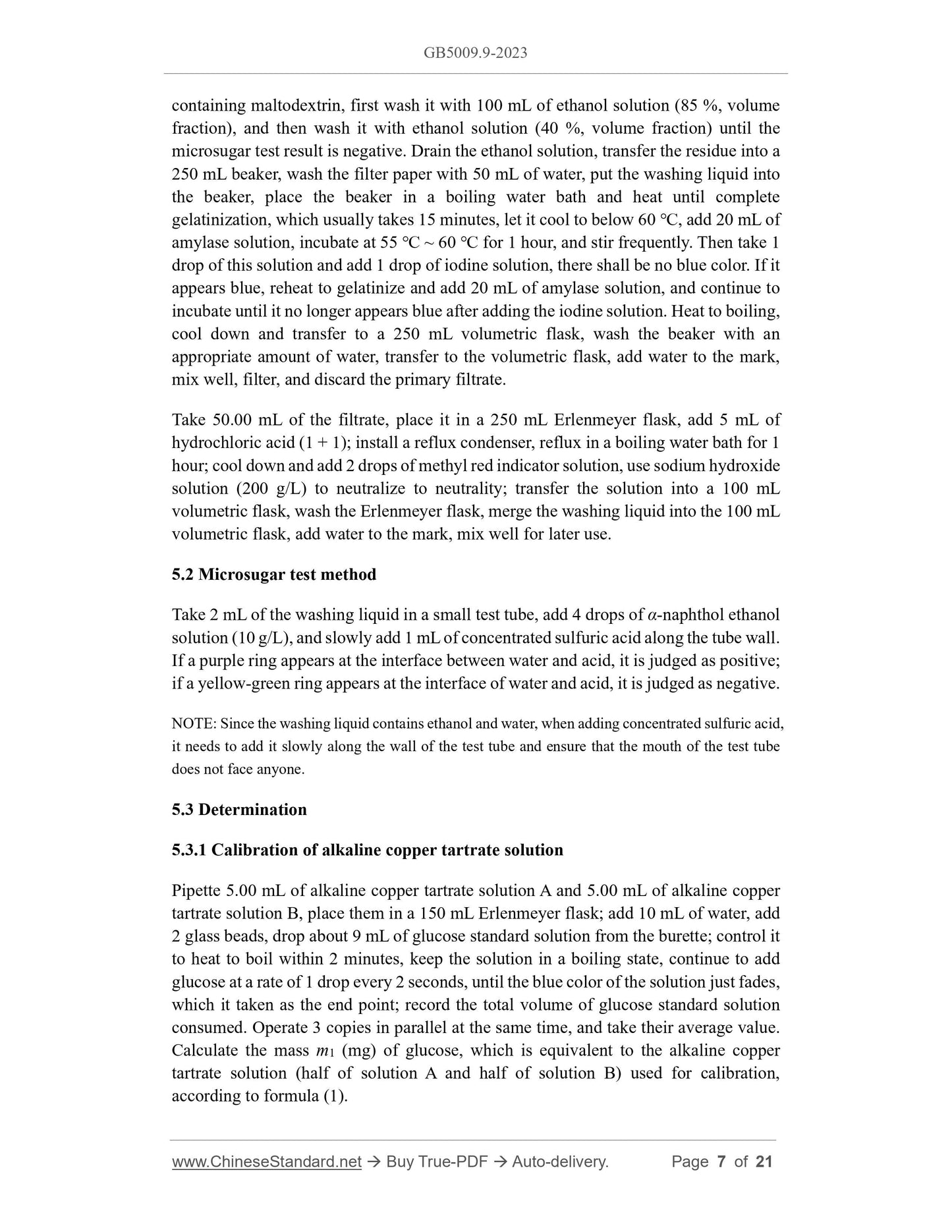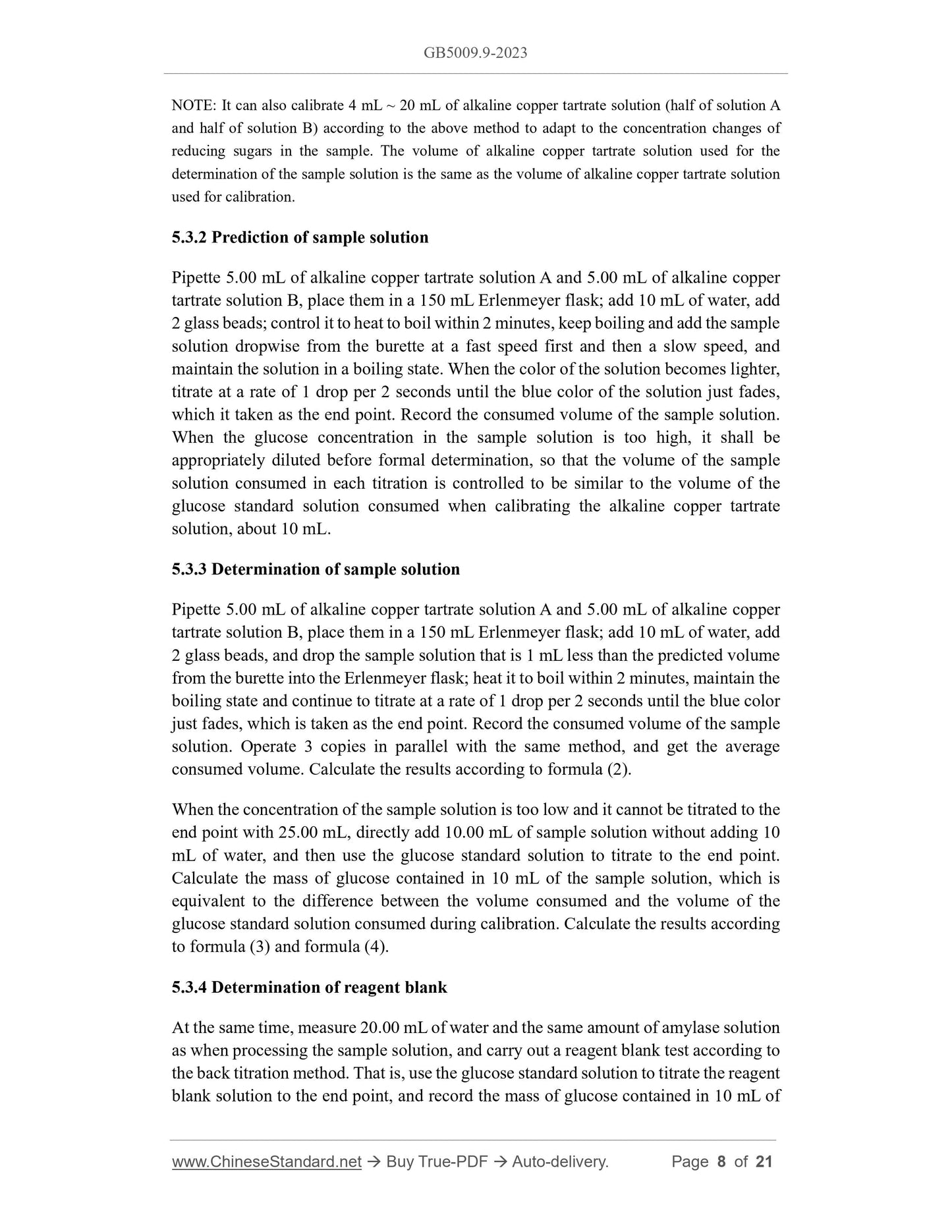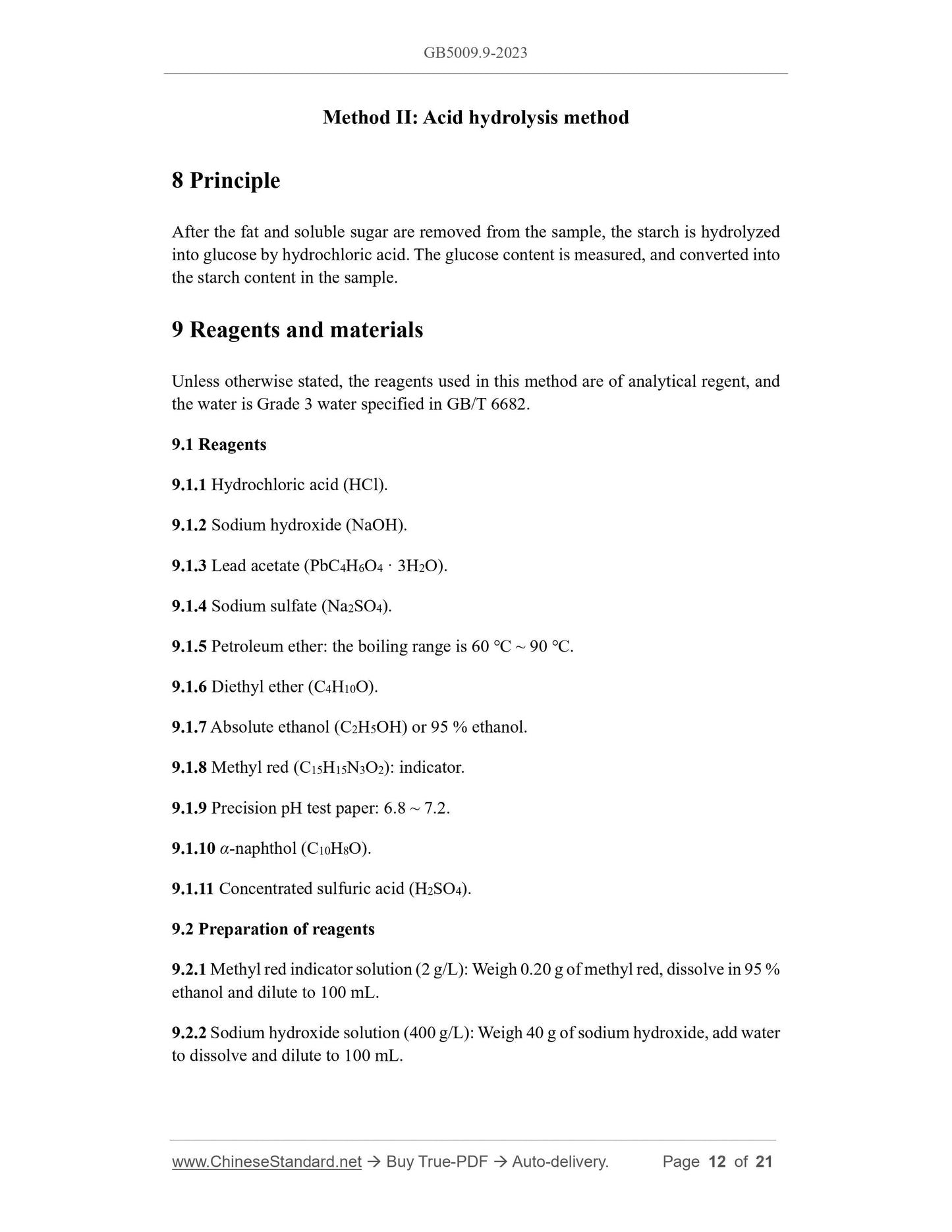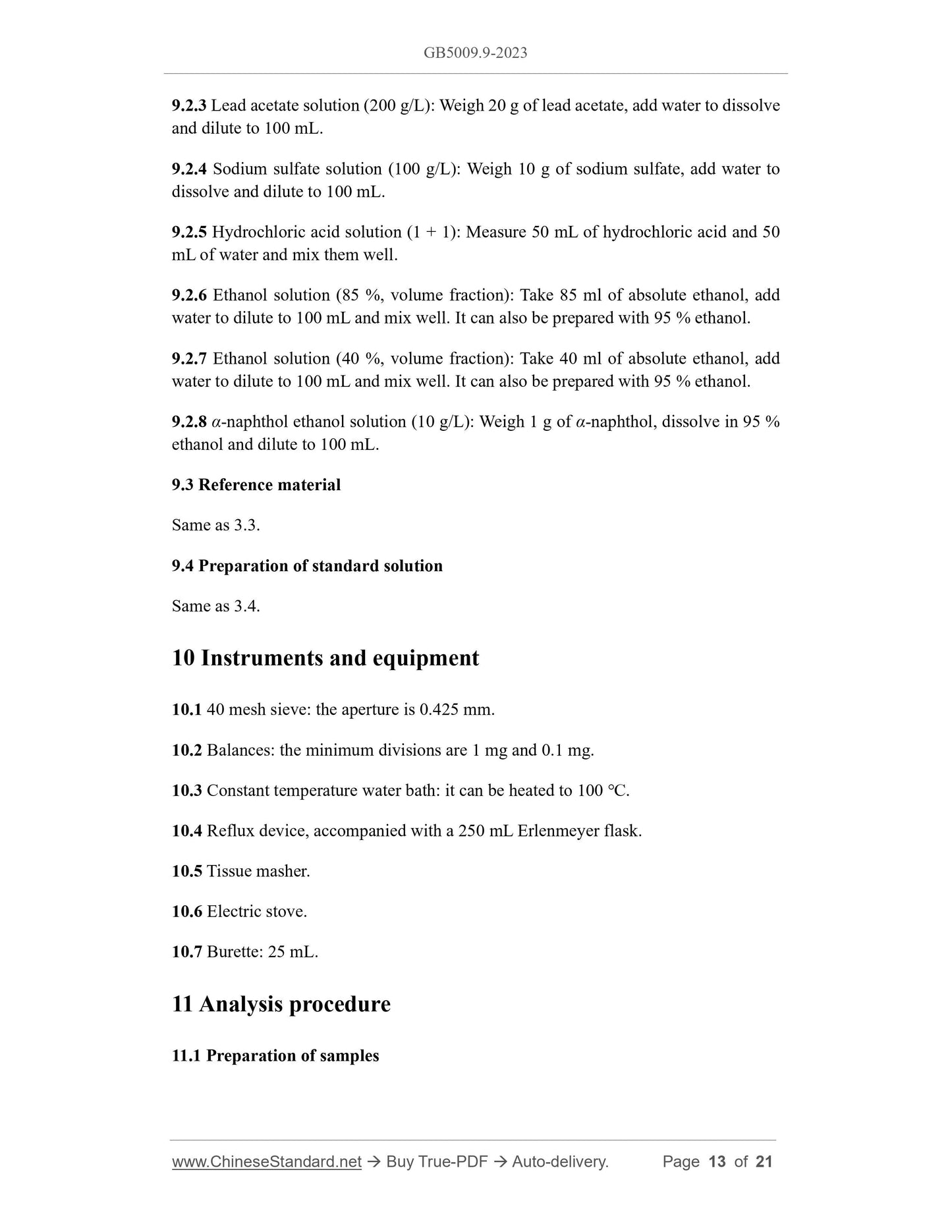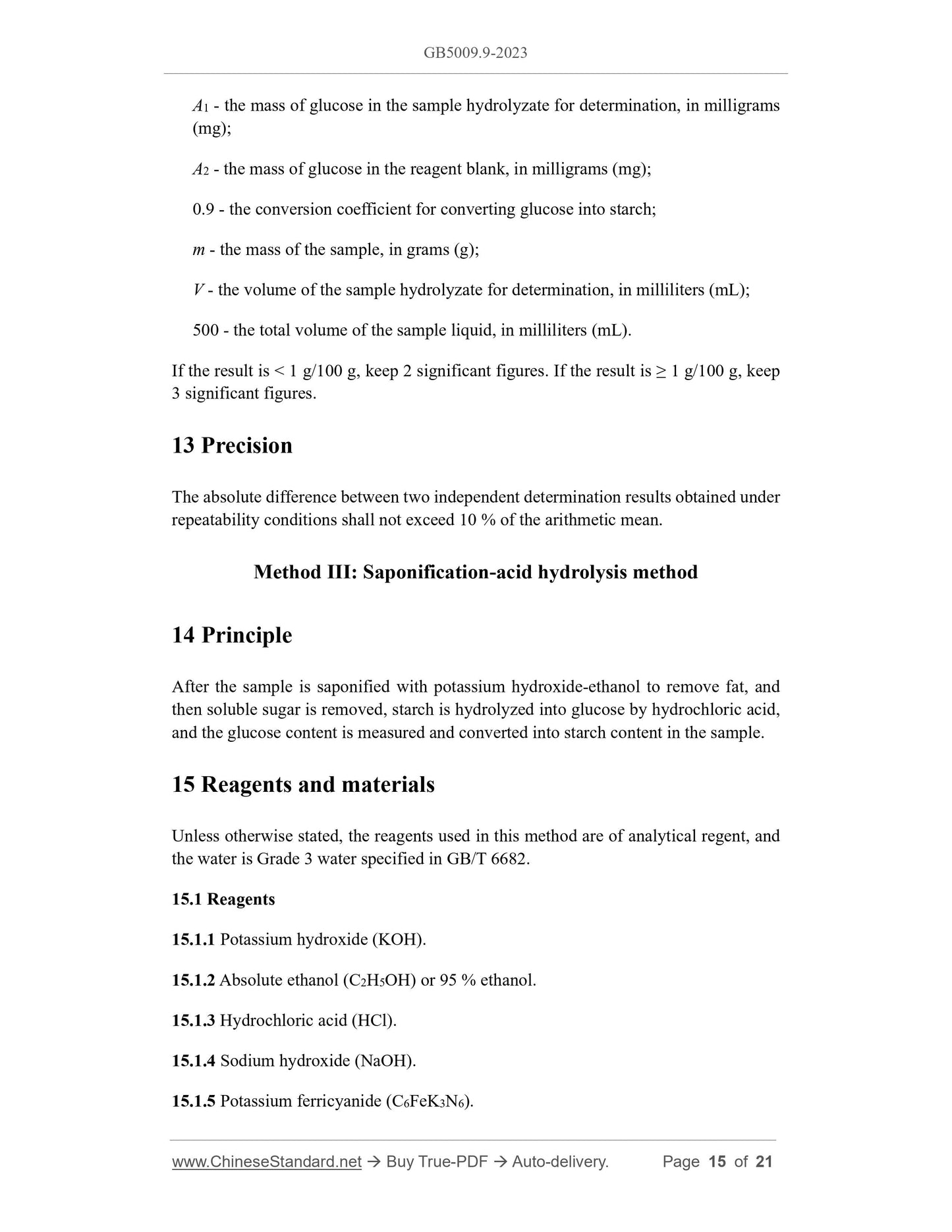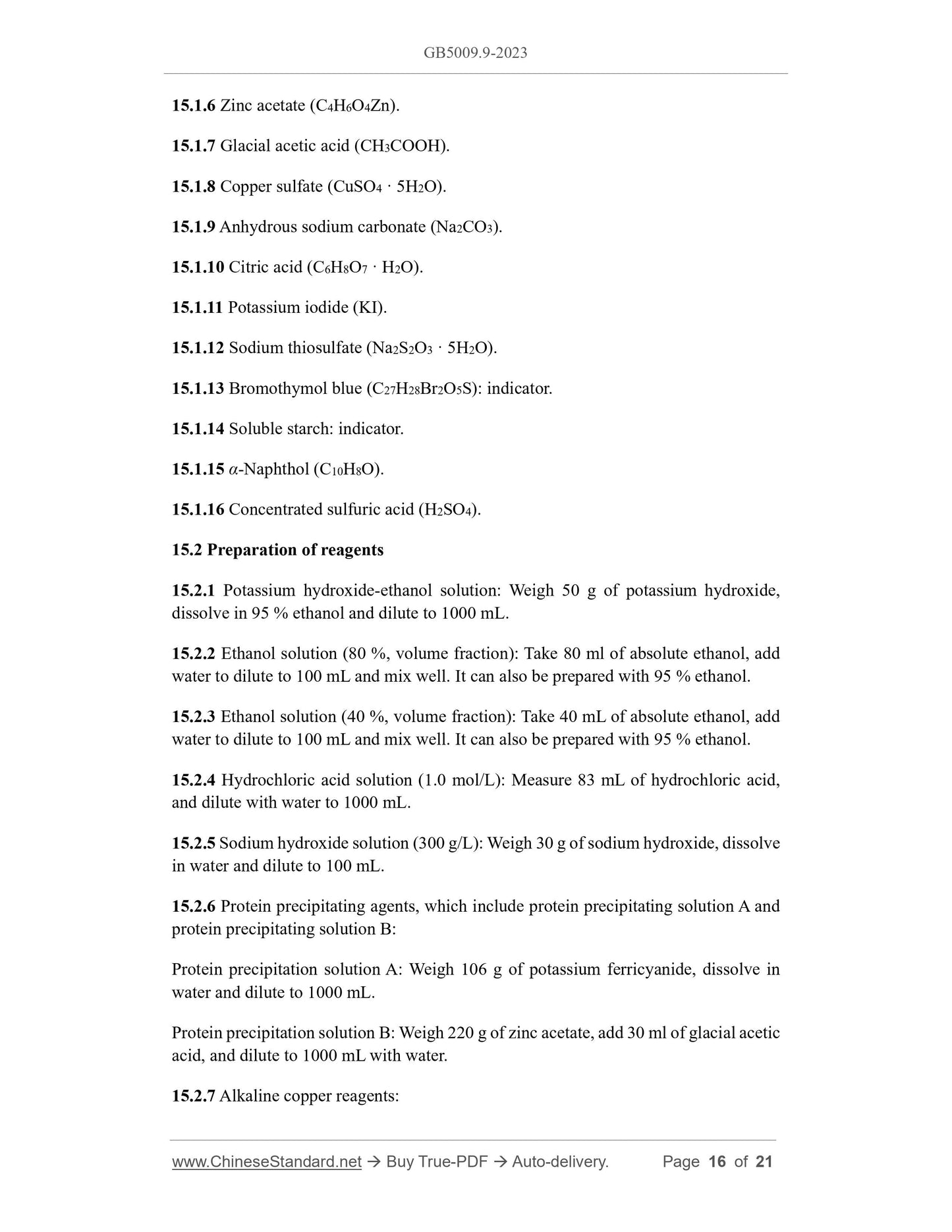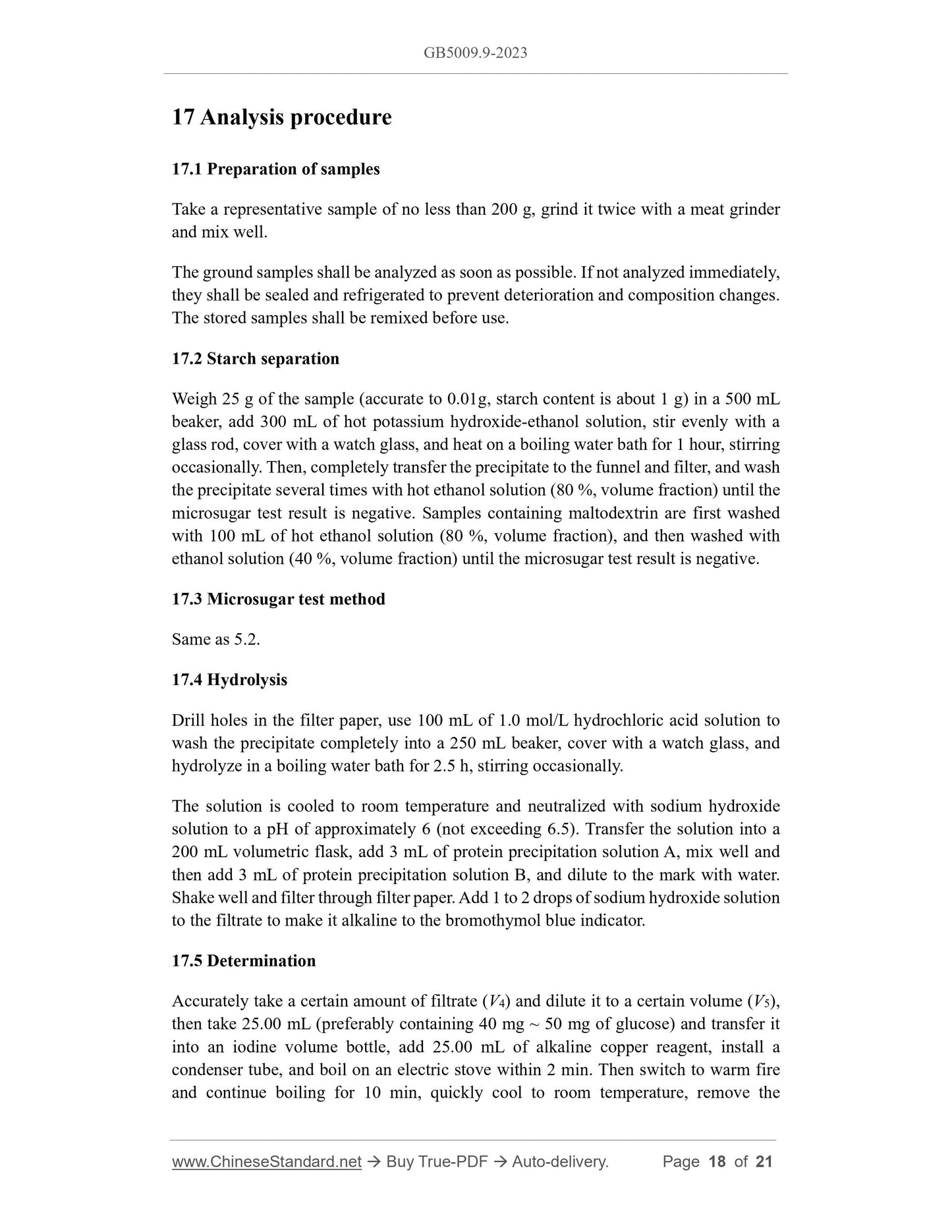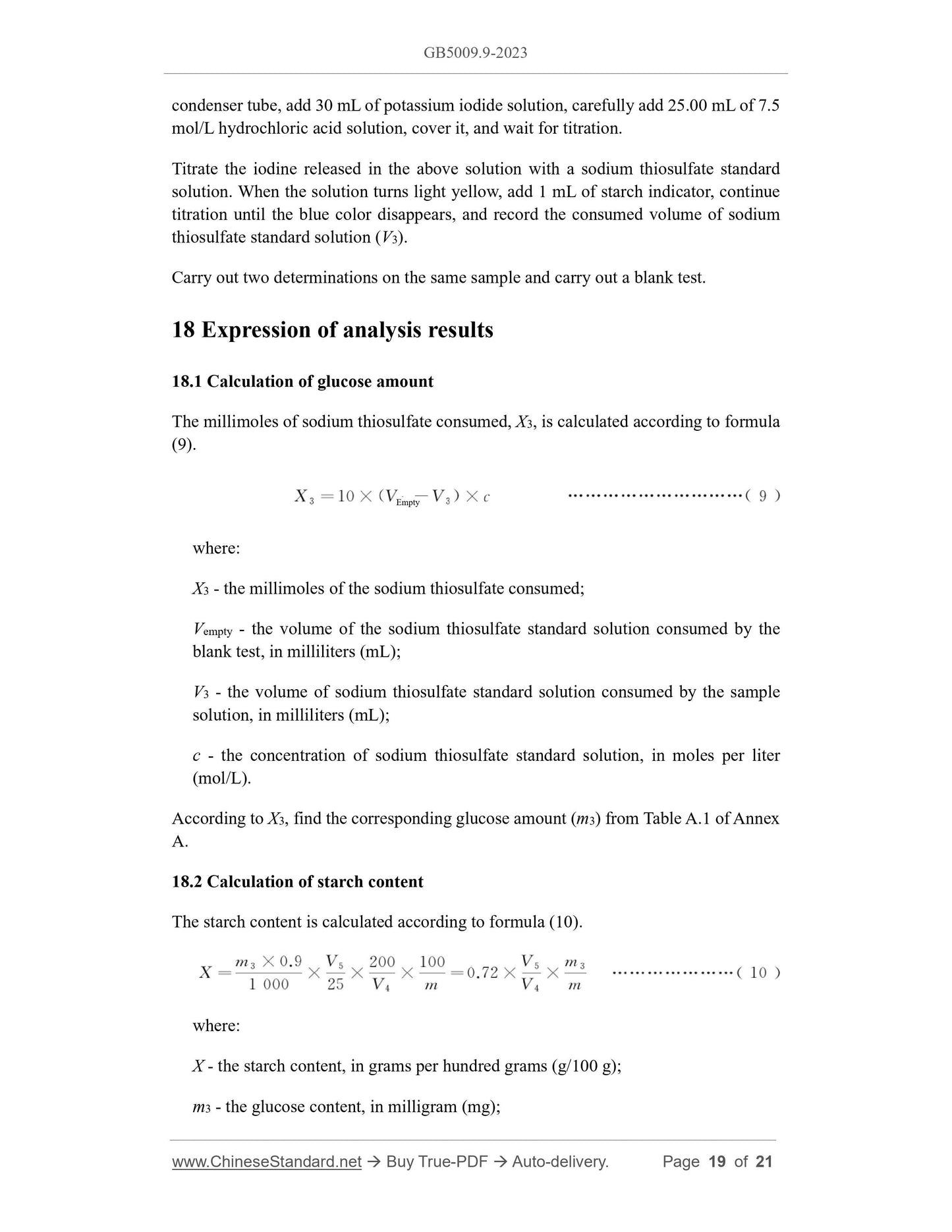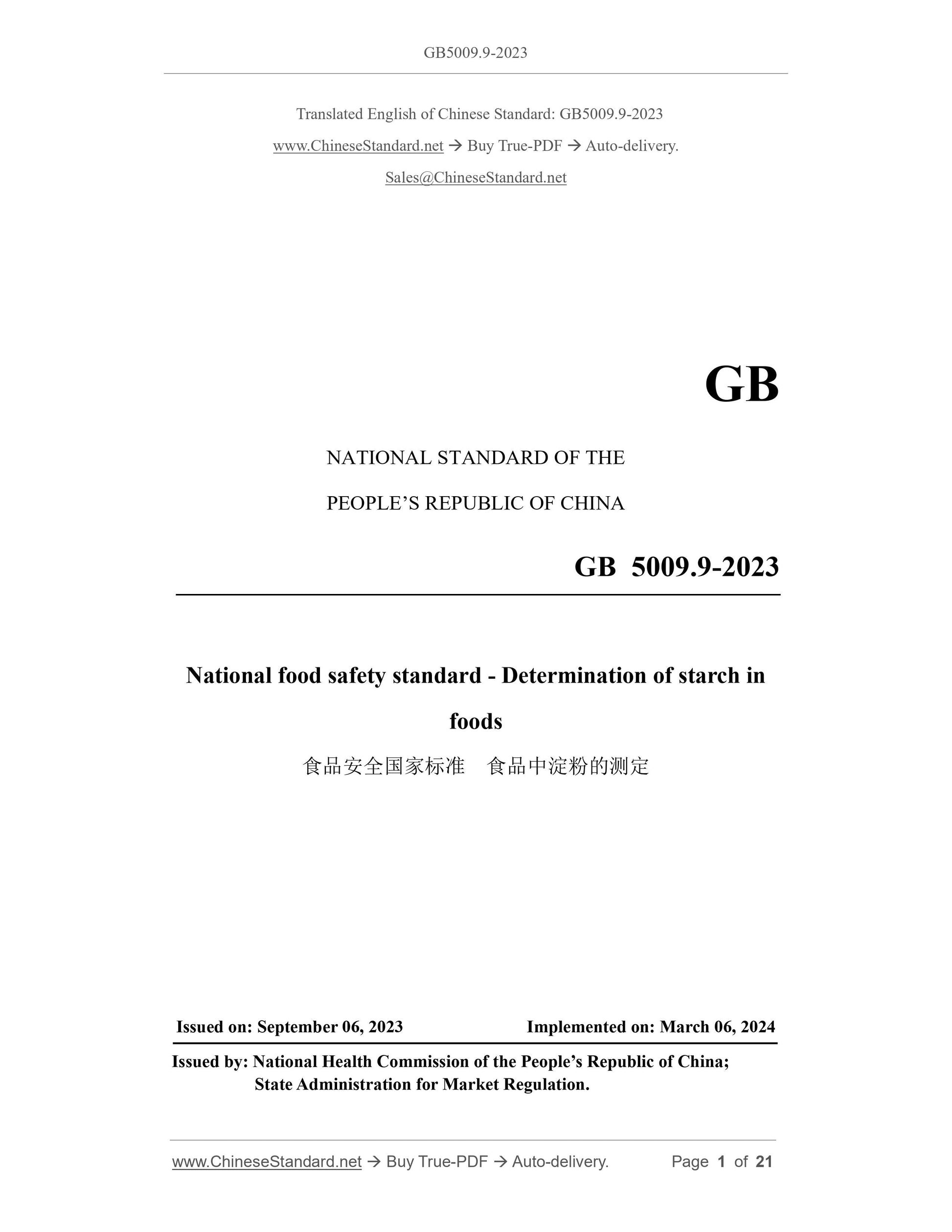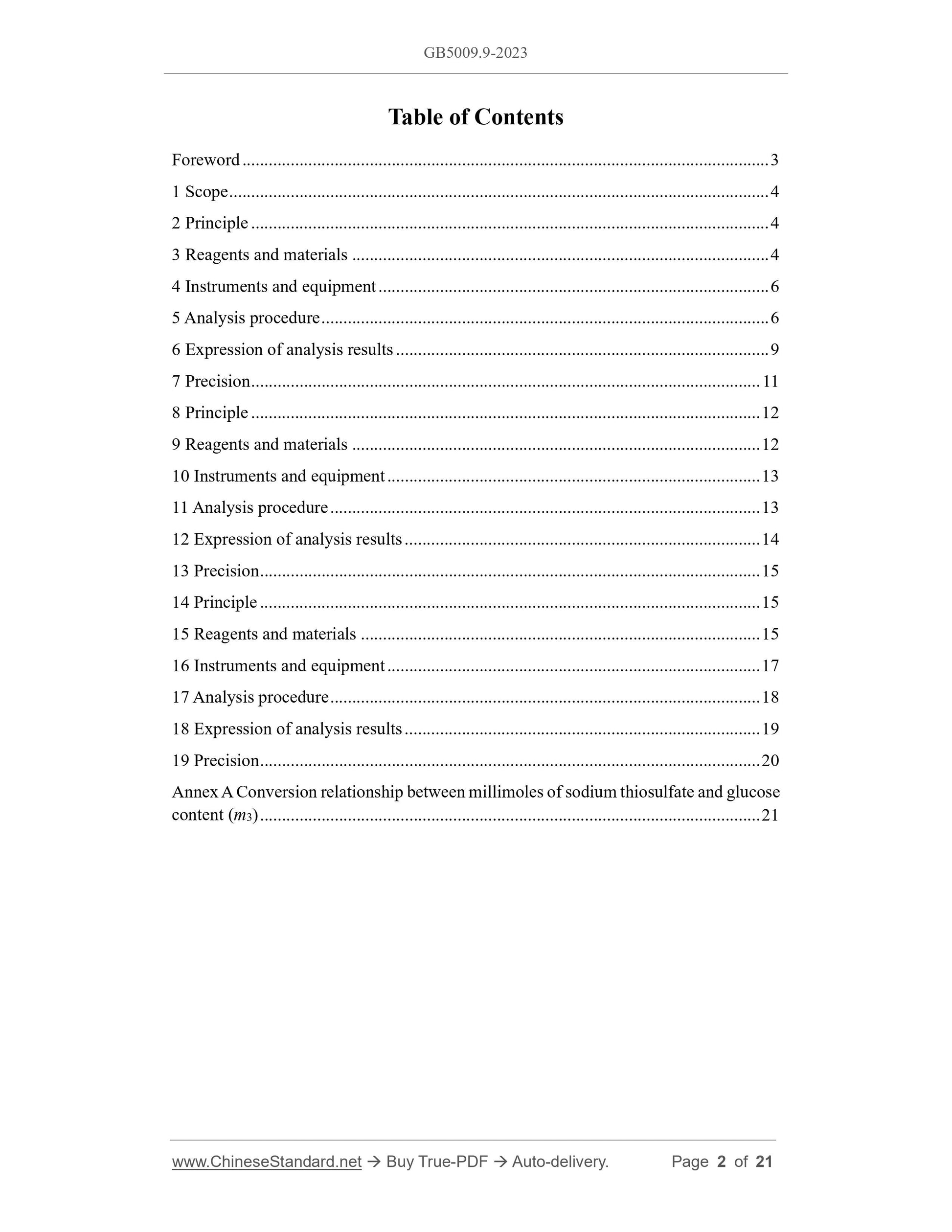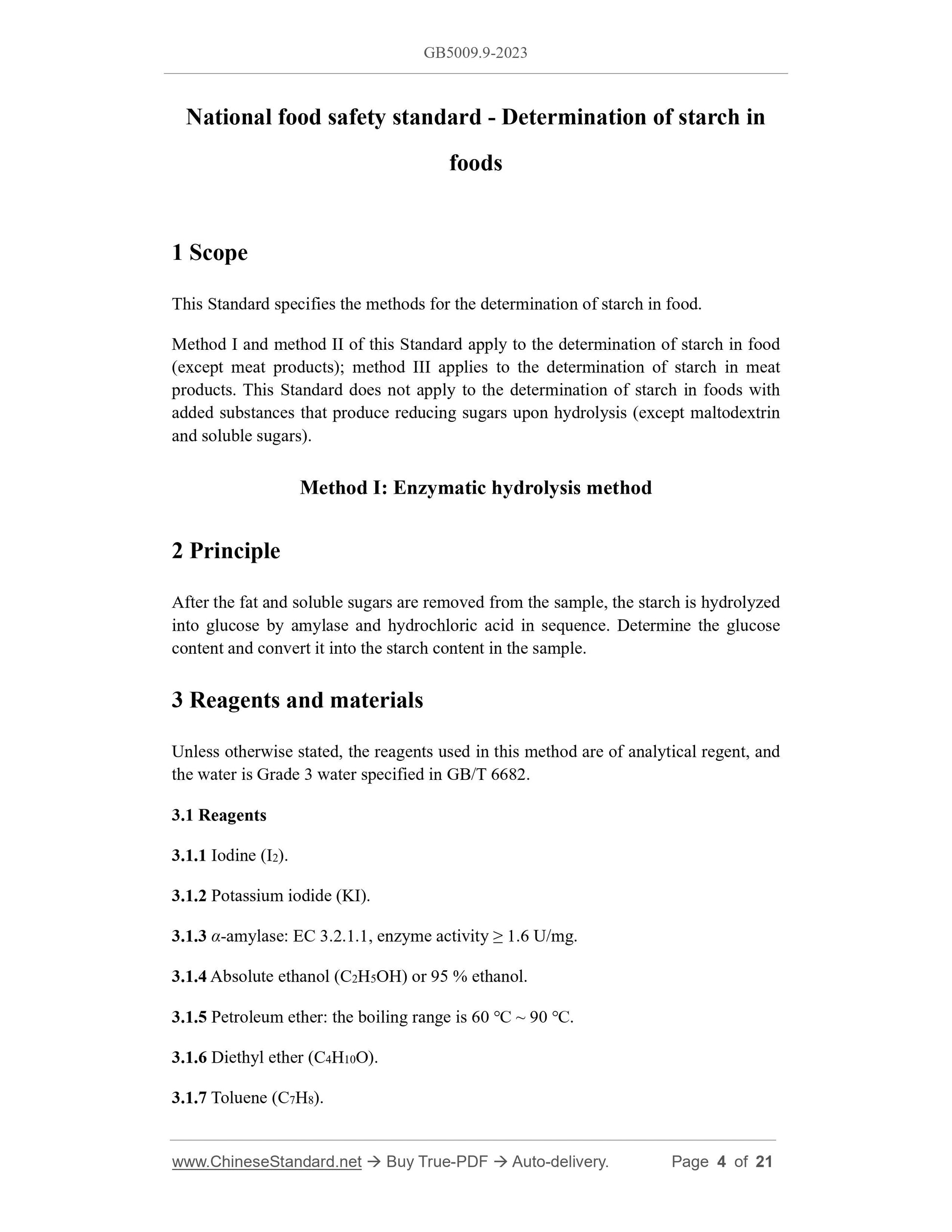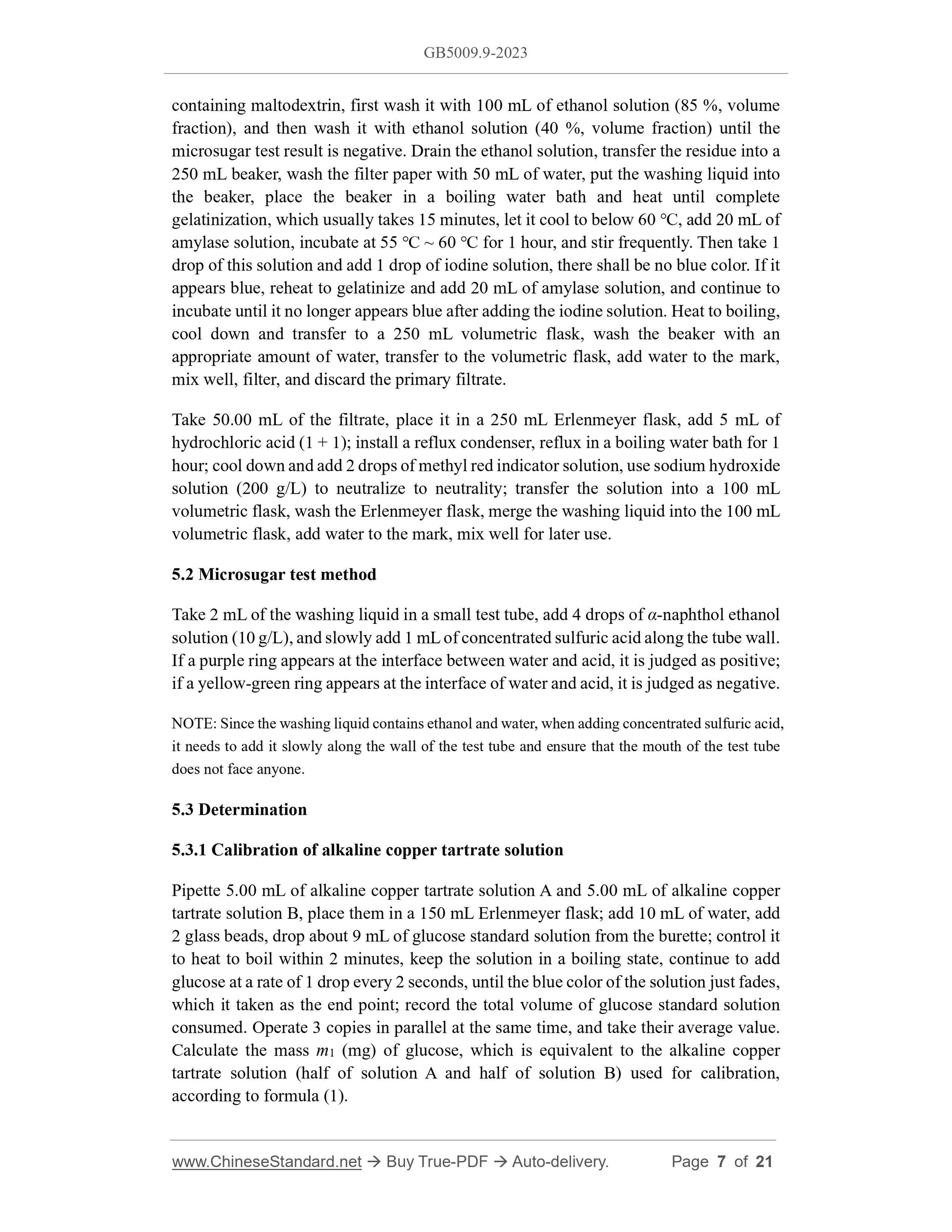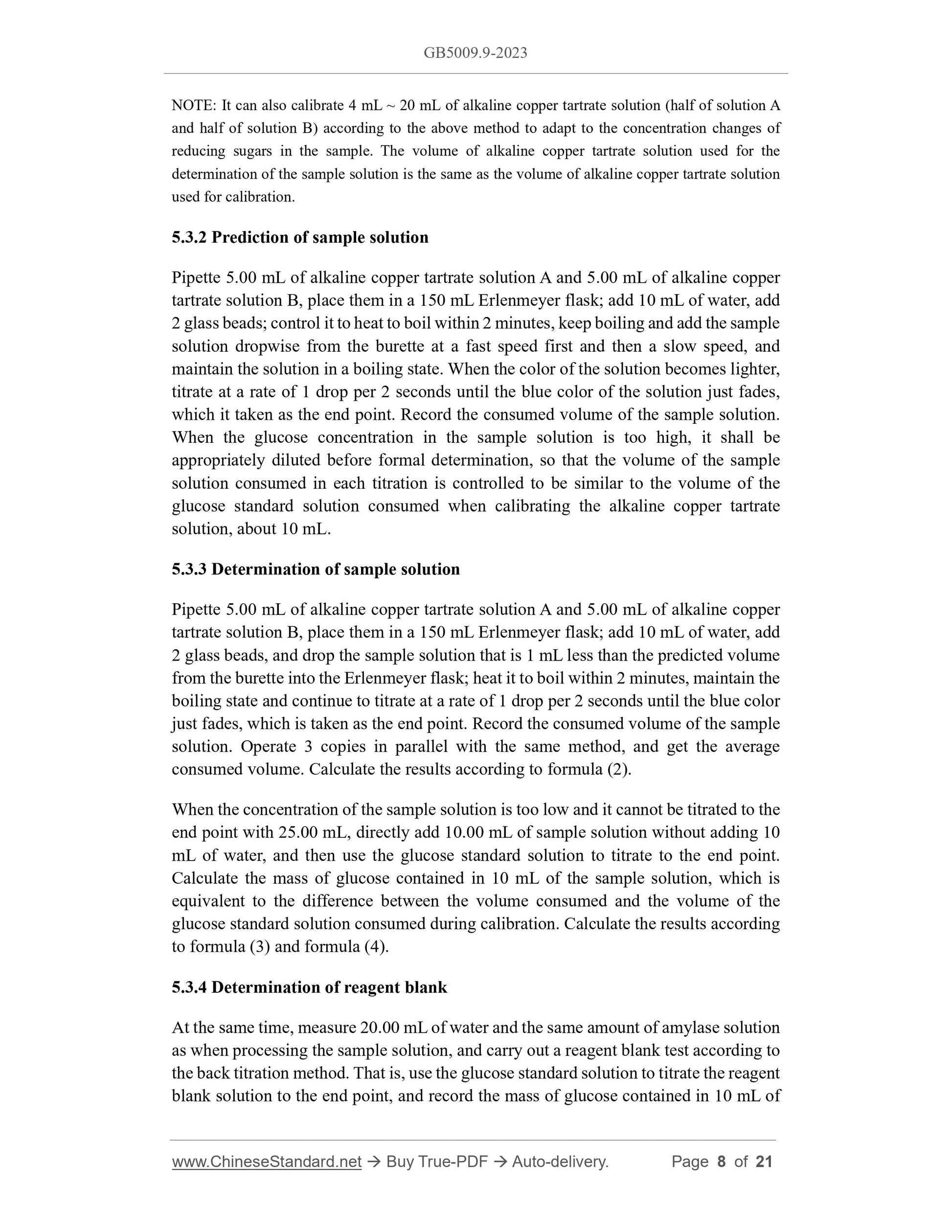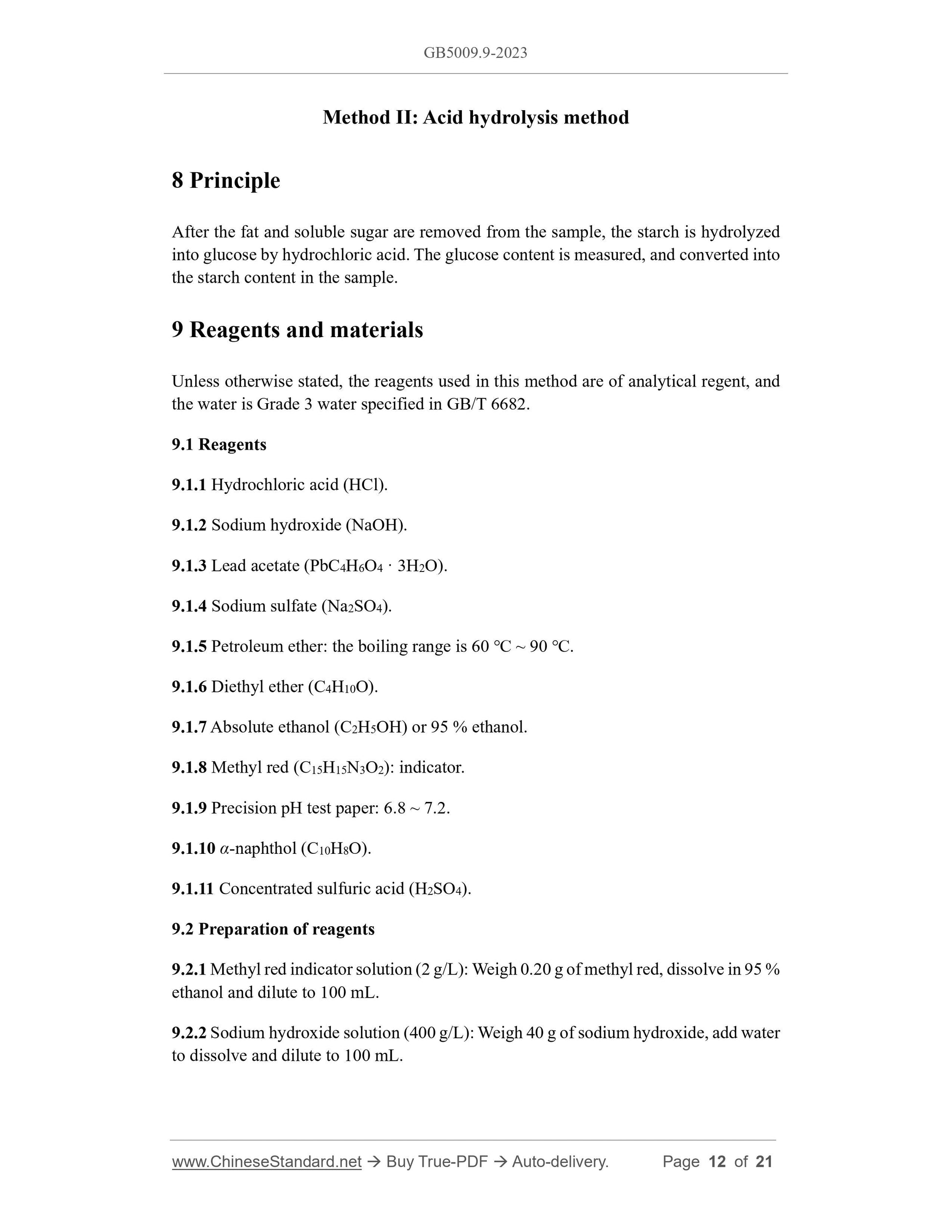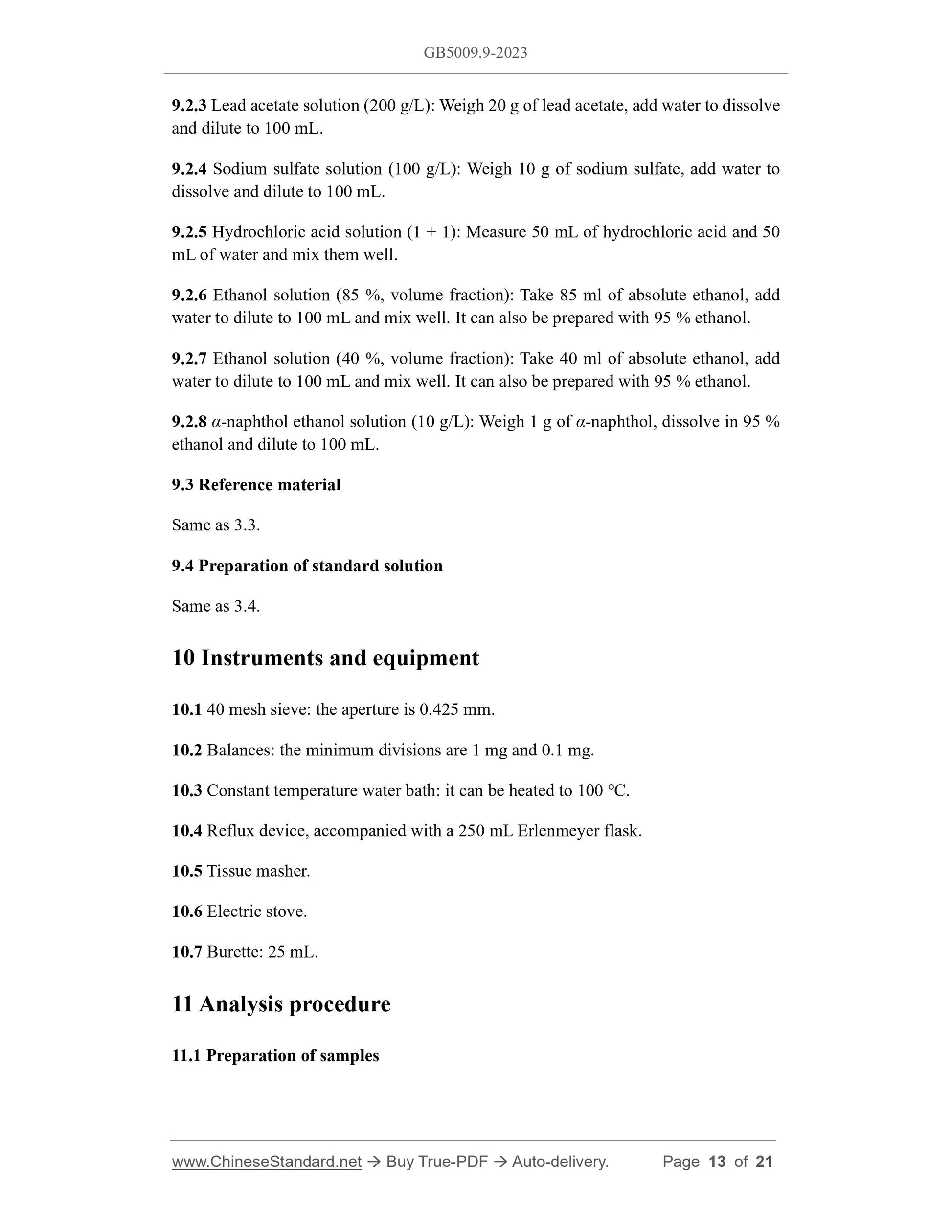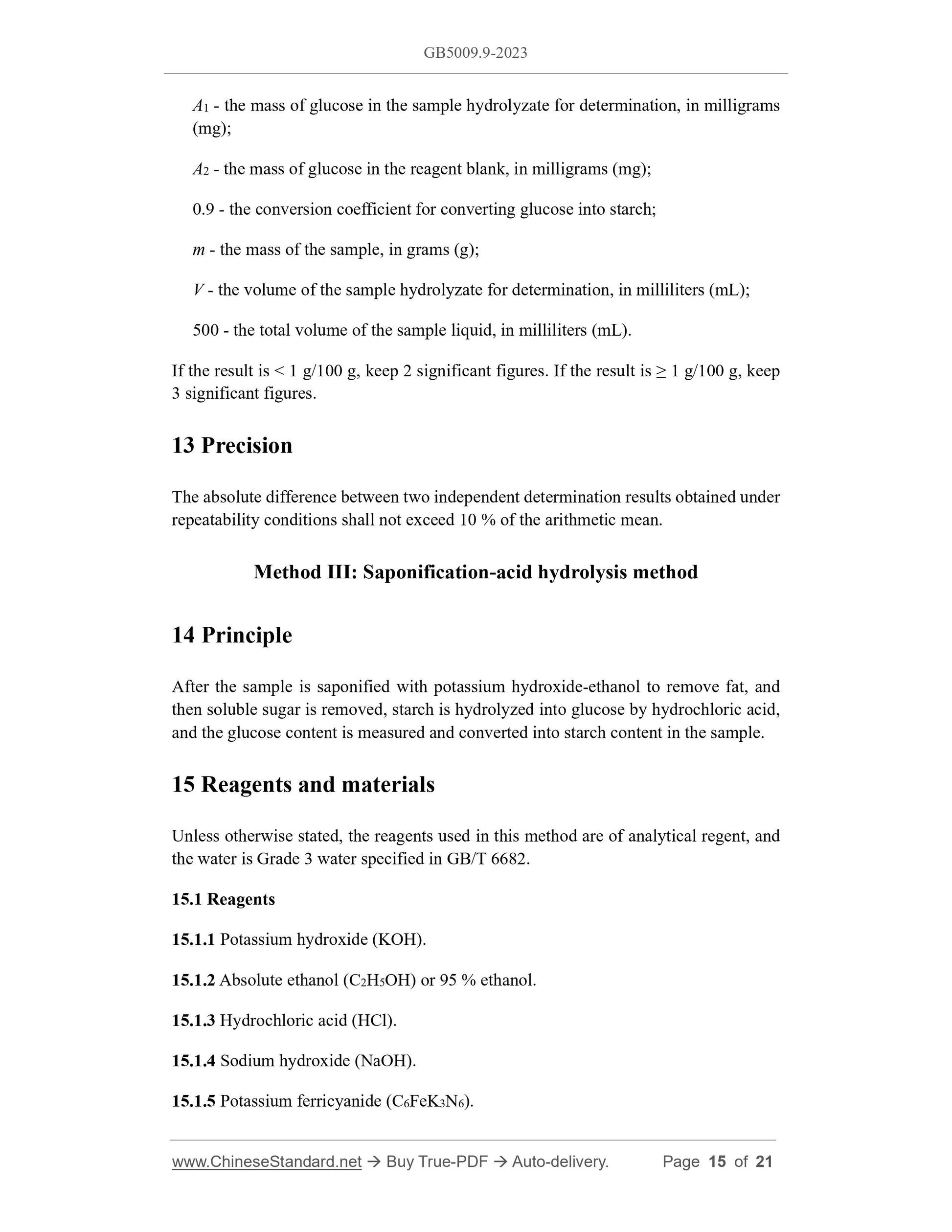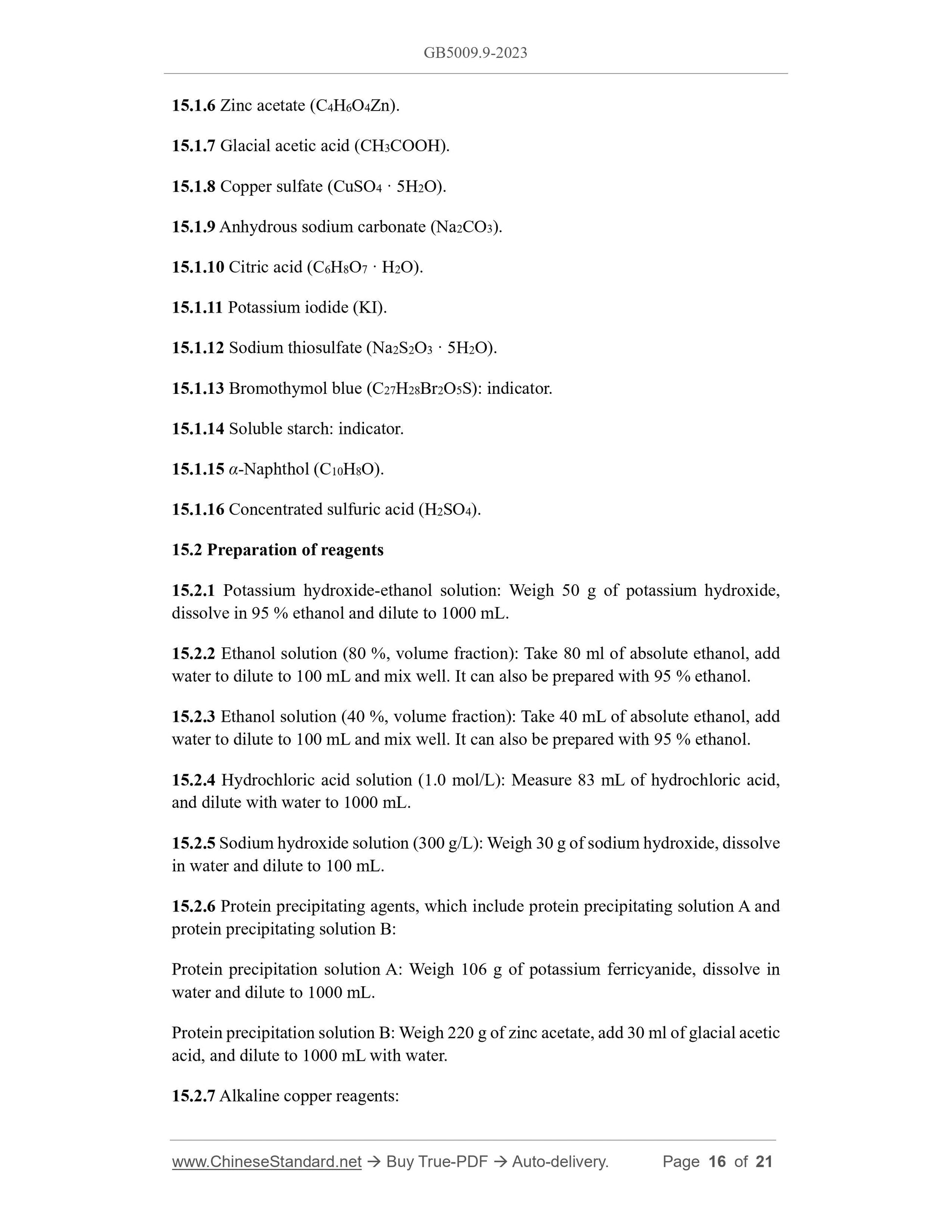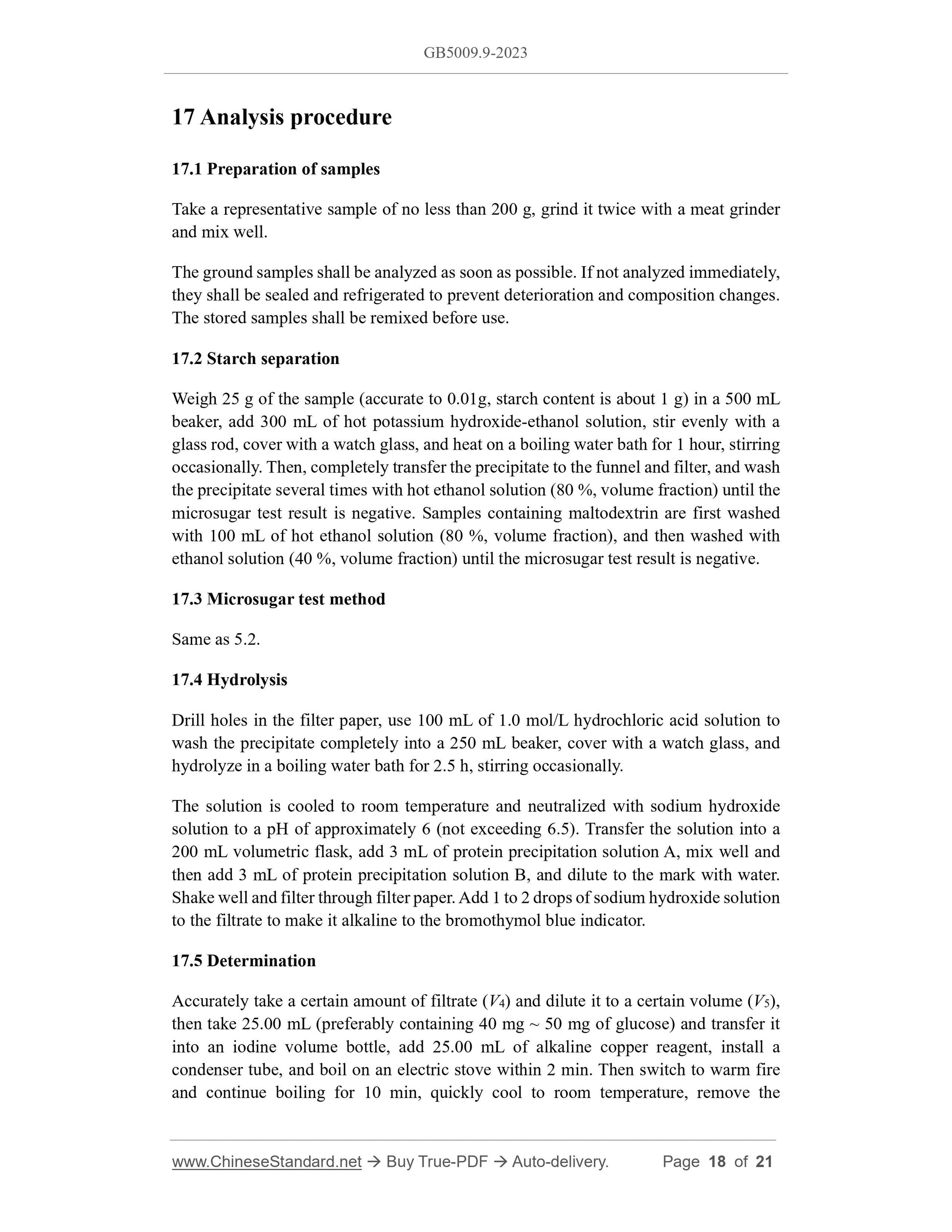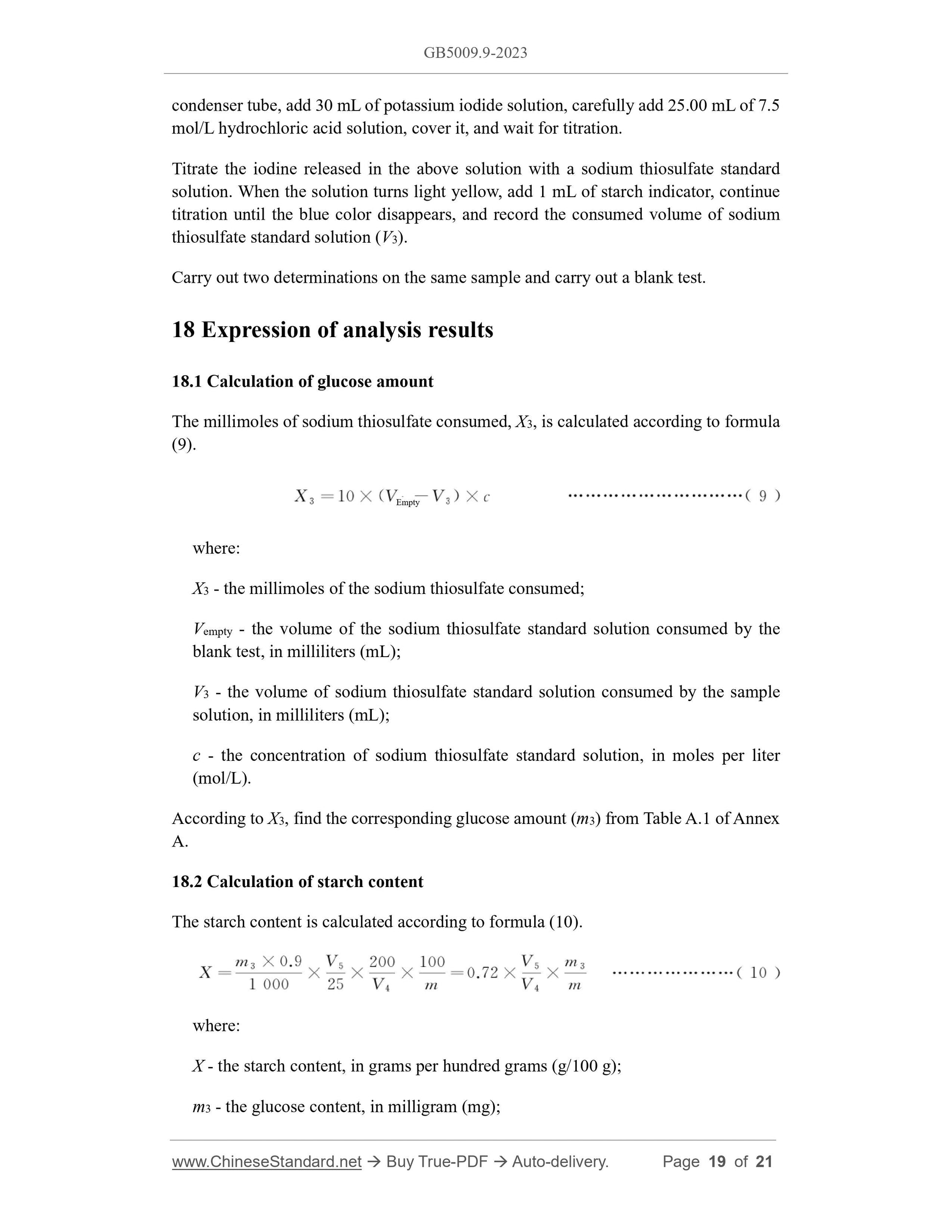1
/
of
11
www.ChineseStandard.us -- Field Test Asia Pte. Ltd.
GB 5009.9-2023 English PDF
GB 5009.9-2023 English PDF
Regular price
$245.00
Regular price
Sale price
$245.00
Unit price
/
per
Shipping calculated at checkout.
Couldn't load pickup availability
GB 5009.9-2023: National food safety standard - Determination of starch in foods
Delivery: 9 seconds. Download (and Email) true-PDF + Invoice.Get Quotation: Click GB 5009.9-2023 (Self-service in 1-minute)
Newer / historical versions: GB 5009.9-2023
Preview True-PDF
Scope
This Standard specifies the methods for the determination of starch in food.Method I and method II of this Standard apply to the determination of starch in food
(except meat products); method III applies to the determination of starch in meat
products. This Standard does not apply to the determination of starch in foods with
added substances that produce reducing sugars upon hydrolysis (except maltodextrin
and soluble sugars).
Method I. Enzymatic hydrolysis method
Basic Data
| Standard ID | GB 5009.9-2023 (GB5009.9-2023) |
| Description (Translated English) | National food safety standard - Determination of pantothenic acid in foods |
| Sector / Industry | National Standard |
| Classification of Chinese Standard | X09 |
| Word Count Estimation | 21,239 |
| Date of Issue | 2023-09-06 |
| Date of Implementation | 2024-03-06 |
| Issuing agency(ies) | National Health Commission of the People's Republic of China, State Administration for Market Regulation |
| Summary | This standard specifies the method for the determination of pantothenic acid in food. Method 1 of this standard is applicable to the determination of pantothenic acid in formula foods for infants and young children (except infant formula foods for special medical purposes), supplementary foods for infants and young children, dairy products, beverages, and nutritional supplements. Methods 2 and 3 of this standard are applicable to the determination of pantothenic acid in food. |
Share
